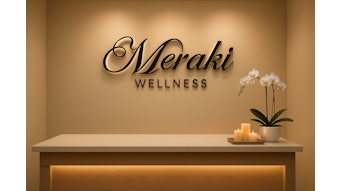As estheticians and skin care professionals, it is vital to educate clients about the ingredients they’re exposed to when getting a service or buying a product. The information helps them make better decisions while creating an authoritative and knowledgeable image for themselves. Granted, explaining these skin-caring solutions can get slightly overcomplicated, considering all the components involved. This guide can help you improve the effectiveness of your explanation.
This article is only available to registered users.
Log In to View the Full Article
As estheticians and skin care professionals, it is vital to educate clients about the ingredients they’re exposed to when getting a service or buying a product. The information helps them make better decisions while creating an authoritative and knowledgeable image for themselves. Granted, explaining these skin-caring solutions can get slightly overcomplicated, considering all the components involved. This guide can help you improve the effectiveness of your explanation.
1. Check How Much Your Clients Want to Learn
Some clients are already familiar with skin care terms, while others are still new to the process. Gauge their knowledge level to understand how deep you have to dive into the topic and whether you need to use basic language.
It also helps to figure out how much your client is comfortable learning. Only 60% of Americans choose skin care products based on whether they are dermatologist-recommended, so they may have minimal to no interest in learning about them.
2. Understand the Terms Yourself
You can only explain the complexities of skin care if you know the terms, so educate yourself about them. Learning the root words can be a good starting point. For instance, “derma” refers to the skin in terms such as dermatitis or dermatology.
From there, you can focus on identifying the prominent terms in the skin care solutions and applications. For example, if an exfoliant is marketed to improve the epidermis, you can now translate it as enhancing the outermost layer of the skin.
3. Highlight the Benefits
If you’re struggling to figure out what information is most vital to include in your explanation, consider the positive effects. They matter the most to skin care clients, and their terms are also basic enough for pretty much anyone to understand.
Take Vitamin C, for example. On a scientific level, it’s known to synthesize collagen and metabolize protein in the body. However, simplifying the explanation by highlighting how it reduces wrinkles and acne makes the information easier to absorb.
4. Make Explanations Simple and Brief
As a skin care enthusiast, you may be tempted to go on and on about skin care ingredients. However, it’s important to recognize when to stop, as information overload overwhelms and puts off clients. Shortlist the key points and make it as brief as possible.
You can communicate most of these in person, but you can also add all the details to your product or service pages. That way, you can save time when meeting with clients, or they can revisit the information out of curiosity. It can also build up your online authority and presence.
5. Address Misconceptions
If your clients have follow-up questions about any concerns or misconceptions, explain them as well. It’s unfortunately common for some chemicals to be associated with skin irritations and other health problems. Practice transparency when communicating with your clients to maintain trust and showcase more knowledge. It’s also a great chance to give them skin prep and aftercare tips.
Make Skin Care Easy to Understand
Skin care ingredients can be complex, so it should be the standard for any expert in the beauty industry to be ready to explain these ingredients. Understand how to simplify the terminology and the effects these have on the skin while being transparent. Doing so can improve your client relationships and give you much more authority.











